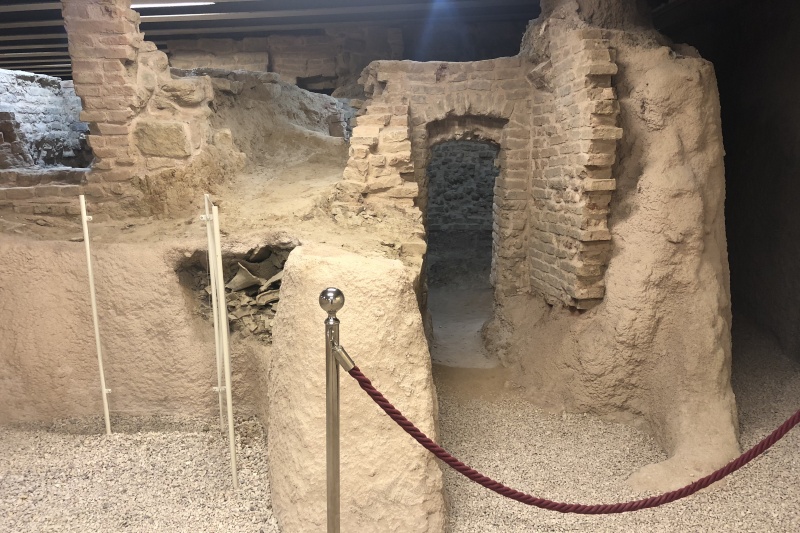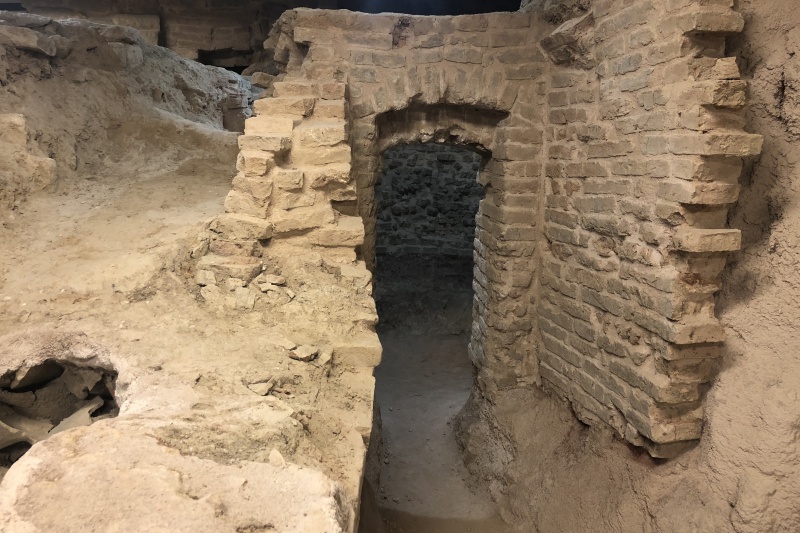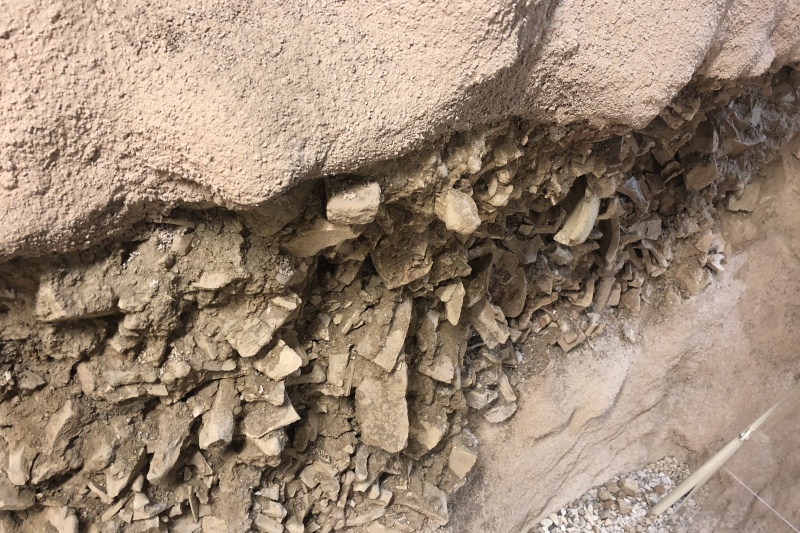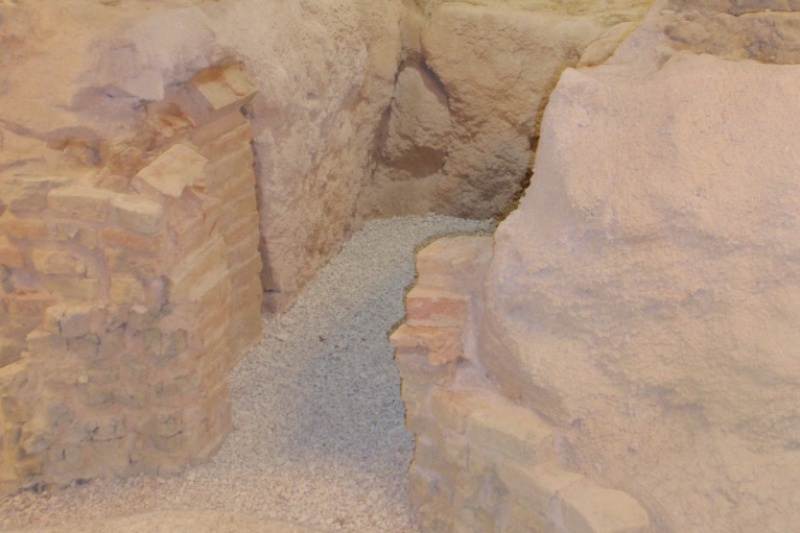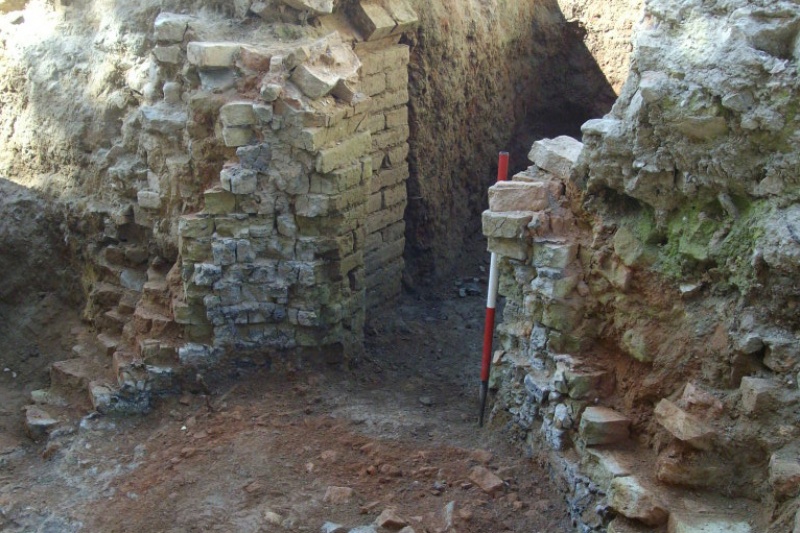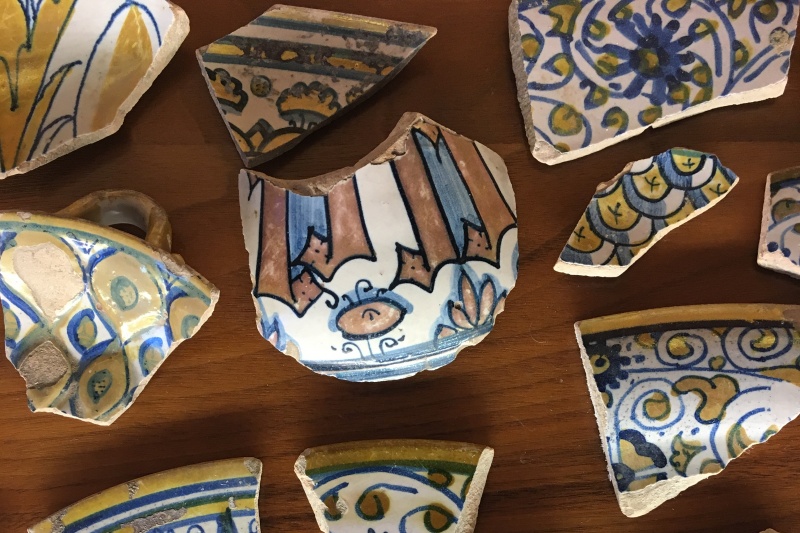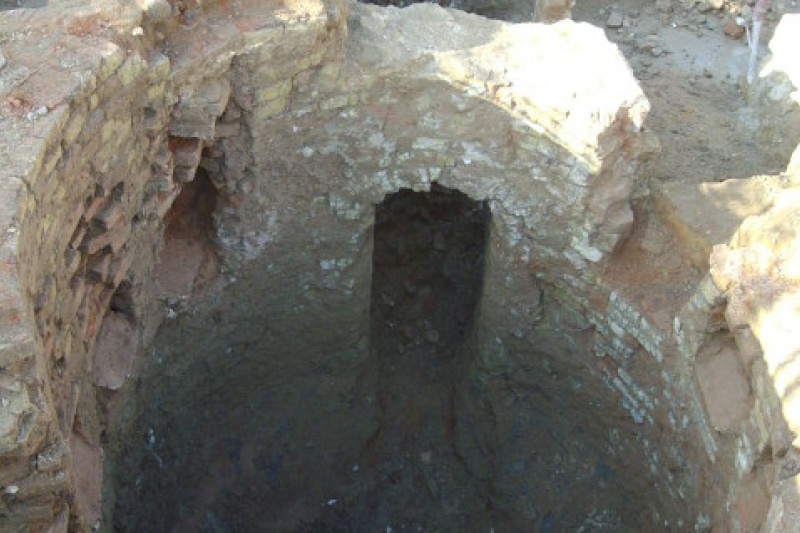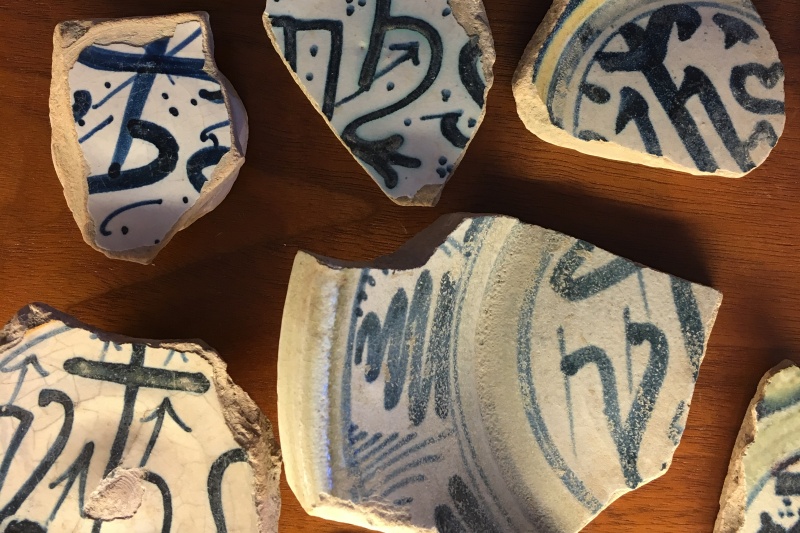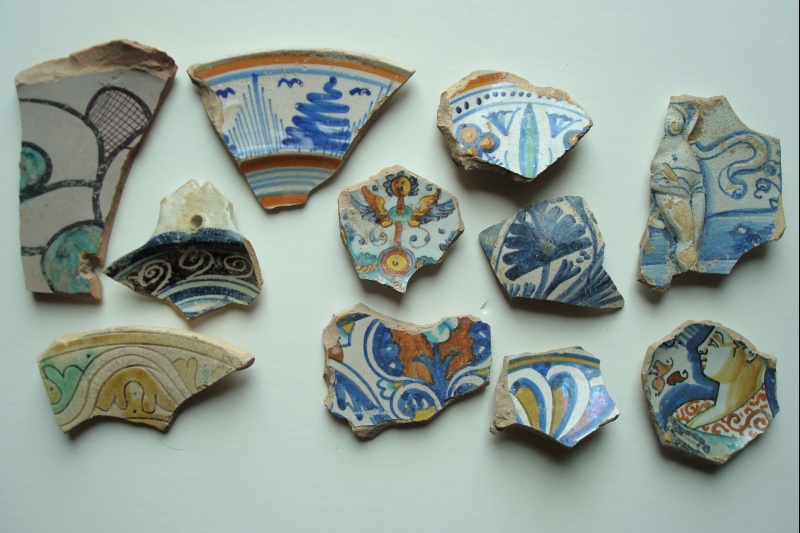An underground tunnel links the Museum to the archaeological structures ranging from 1200 to 1700.
The San Salvatore archaeological site, linked to the Ceramics museum by an underground tunnel, was discovered in 2008 when work was being done for the construction of a public car park in the historic centre, near to the castle walls, where the Church of San Salvatore was located until the beginning of the 20th century.
The archaeological investigation, completed in 2010, revealed a series of structures dating from the late 1200s to the early 1700s and it has allowed the find of a large number of ceramic pieces, including majolica objects, graffito slipware and glazed earthenware.
In the Northern area it’s possible to see a section of the medieval city walls (13th century); on the inside an underground room was found, built in bricks dated from the late 13th and early 14th century, probably a storeroom for clay and crude metals and subsequently used as a “dump”. Near the existing city walls, two well preserved kilns were discovered, dating from the late 14th to the first half of the 15th century.
The main production area, active from the second half of the 15th to the beginning of the 18th century, is made up of various interconnecting rooms, with two kilns, a vat for the settling of the clay and the remains of a fusing oven at the centre. The smaller of the two kilns, square in shape, is at a higher level than the main kiln (circular), and in all likelihood it was the kiln used for the lusterware production.
